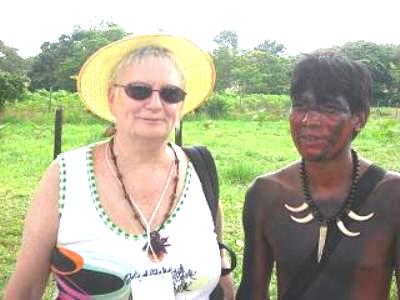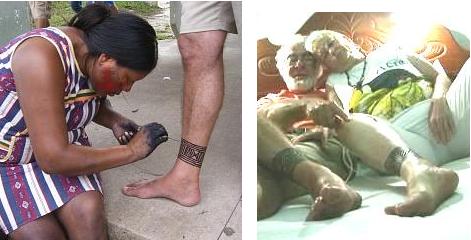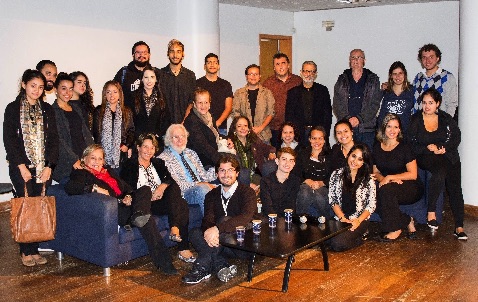Stories
Midterm Report on Culture of Peace - 2005
Youth Report on Culture of Peace - 2006
A trilogy of books for a new strategy
Final Report on Culture of Peace - 2010
Struggling with the United Nations
* * *
The Culture of Peace News Network continued
Missions for the Culture of Peace
Travels with Lindsay in the USA
Vacations with Lindsay in the Caribbean
Brazil had been one of the most highly mobilized countries for the Manifesto 2000, gathering over 15 million signatures. For one reason, Brazilians had recently experienced the culture of war of military dictatorship and understood immediately the importance of a culture of peace. And for another reason, the Brasilia office of UNESCO, under the leadership of Jorge Wertheim, was extremely active for the International Year for the Culture of Peace.
The committee responsible for collecting Manifesto signatures in São Paulo remained active after the year and became the Comitê Paulista of the Culture of Peace under the leadership of Lia Diskin and her organization Palas Athena. Over the course of the Decade for a Culture of Peace, they became the model for mobilizing a culture of peace city. CPNN carried reports from them in 2005, 2007, 2007, and 2009. This eventually provided inspiration for the analysis in my book, World Peace through the Town Hall.
Brazil was also at the origin of the World Social Forum movement which began at Porto Alegre as an people's alternative to the annual forum in Davos, Switzerland, where all of the richest capitalists and their political allies gather each year. Kiki and I attended the Porto Alegre Forum in 2005 and set up a booth and distributed flyers for the World Civil Society Report with the help of a young man named Gert Danielson. In conjunction with the trip to the World Social Forum, I was invited by Lia Diskin to give a weekend seminar at Palas Athena in São Paulo. It seemed to me that the Brazilians had a more immediate and profound understanding of the culture of peace than I had encountered anywhere else.
Kiki and I were impressed by the indigenous peoples and their contribution to Brazilian culture. We watched with interest their dance and music presentations at the Porto Alegre Forum. A few years later, at the United Nations in New York, I was greatly moved by the film Xavante strategy made by a Brazilian tribe about their encounter with European civilization.

Kiki with a Kayapo who later sold her the necklace
Kiki and I were attracted by the plans for the World Social Forum of 2009 in Belem, in the Brazilian amazon, which bussed indigenous peoples in from throughout the region, many traveling for weeks, in order to save the forest from destruction. As they eloquently put it in their dances, music, sales items and conversations (their Portuguese not much better than mine), their battle to save the forest was not only to preserve their own cultures, but also to preserve the planet which is endangered by global warming. They came in their war paint and bearing their blowguns and bows and arrows to make the point.
There were Kayapo women on the streets of the Forum who painted the Europeans and urban Latinos with the tattoos of their culture. Kiki and I got tattooed, as shown in the photos and later, after the initial painted images had worn off, we replaced them with permanent tattoos in Paris.

In 2009, Kiki and I went to the Peace Congress held in Santos by Helena Lourenço whom we had met a few years previously at the Paris Salon de la Paix. Helena was the head of ABrasOFFA, the Brazilian Association of Organizers of Folk Festivals. With the help of her Amaralinhos volunteers, one year she had organized a festival on the broad beach of Santos for an audience of 70,000. She brought the enthusiasm and energy of Brazilian dance and music to the culture of peace. And at the Congress we decided to work together to make Santos into a model city for the culture of peace strategy.
In 2017, Kiki and I went back to Brazil as guests of Helena Lourenço, the City Peace Commission of Santos and the Santos Rotary Club. In Santos, she arranged speeches for me to large audiences (500 or so) at the UNIP University and the Santa Cecilia University, as well as Rotary, the mayor, the main newspaper (O Tribuna) and the organization of lawyers. Then we flew up to Pernambuco for meetings in Caruaru and nearby Agrestina to launch city peace commissions there.

On my right is Helena Lourenço. In the upper right, from right to left, are Herbert Lima, his girlfriend Myrian, and Helena's husband Ynel.
(Click on photo to enlarge)
 |
Stages
1986-1992
Fall of Soviet Empire
1992-1997
UNESCO Culture of Peace Programme